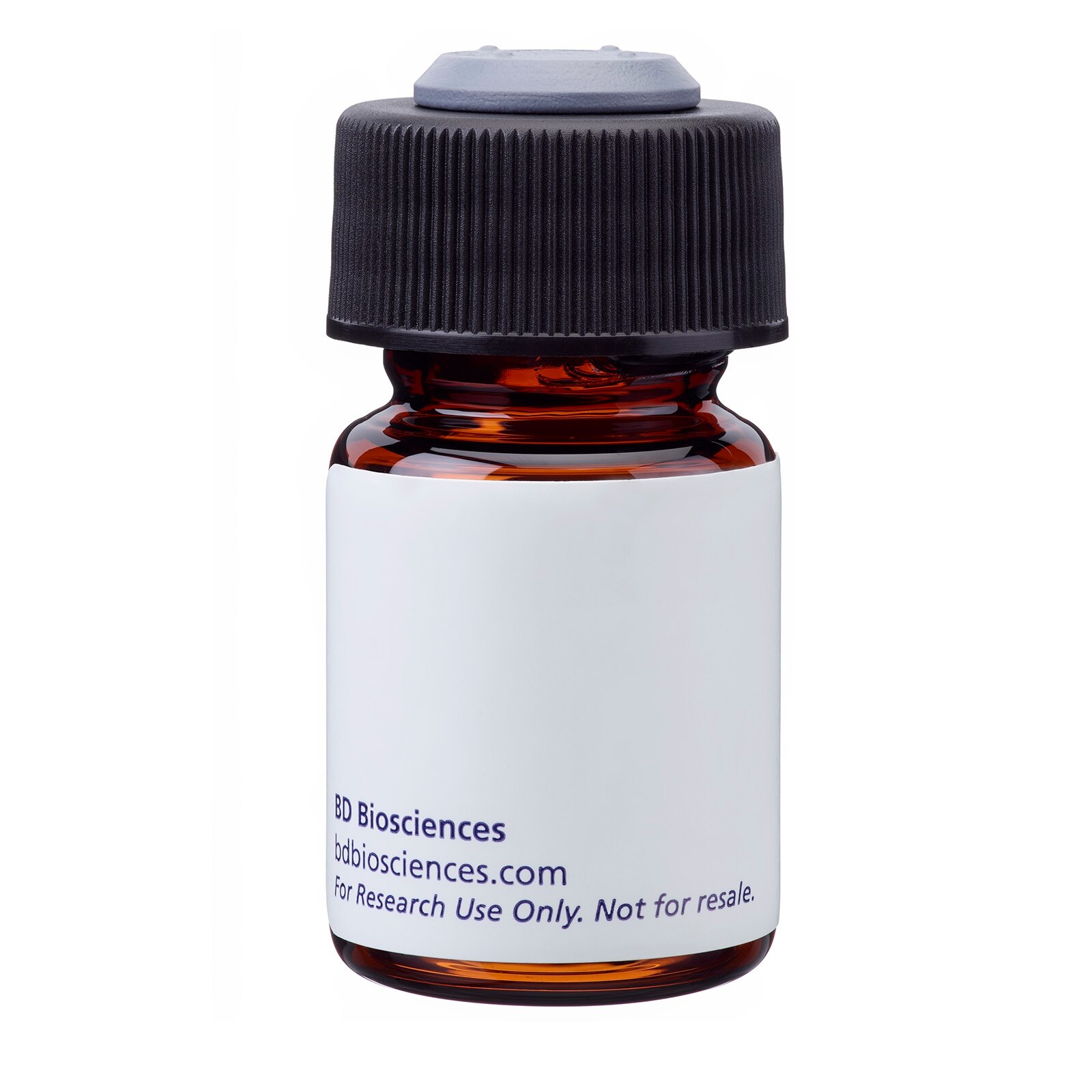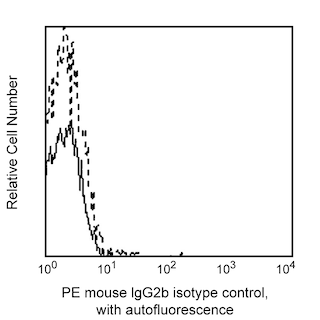Old Browser
Looks like you're visiting us from {countryName}.
Would you like to stay on the current country site or be switched to your country?




Profile of A431 an epidermoid carcinoma cell line, analyzed on a FACScan (BDIS, San Jose, CA)


BD Pharmingen™ PE Mouse Anti-Human EGF Receptor

Regulatory Status Legend
Any use of products other than the permitted use without the express written authorization of Becton, Dickinson and Company is strictly prohibited.
Preparation And Storage
Product Notices
- This reagent has been pre-diluted for use at the recommended Volume per Test. We typically use 1 × 10^6 cells in a 100-µl experimental sample (a test).
- Since applications vary, each investigator should titrate the reagent to obtain optimal results.
- Please refer to www.bdbiosciences.com/us/s/resources for technical protocols.
- Caution: Sodium azide yields highly toxic hydrazoic acid under acidic conditions. Dilute azide compounds in running water before discarding to avoid accumulation of potentially explosive deposits in plumbing.
- Source of all serum proteins is from USDA inspected abattoirs located in the United States.
The EGFR.1 monoclonal antibody specifically binds to the epidermal growth factor receptor (EGF-R). The EGF-R is a transmembrane glycoprotein of approximately 170 kDa that is expressed on most cells. It consists of a glycosylated extracellular domain which binds to epidermal growth factor (EGF), a transmembrane domain, and an intracellular domain with tyrosine-kinase activity essential for signal transduction. The EGF-R plays an important role in the growth and differentiation of many cellular types. Transforming growth factor α (TGFα), vaccinia virus growth factor, and related growth factors can also bind to and signal through the EGF-R.

Development References (4)
-
Callard R, Gearing A. Callard R, Gearing A. The Cytokine Facts Book. San Diego: Academic Press; 1994.
-
Fernandez A, Spitzer E, Perez R. A new monoclonal antibody for detection of EGF-receptors in western blots and paraffin-embedded tissue sections. J Cell Biol. 1992; 49(2):157-165. (Biology). View Reference
-
Messa C, Russo F, Notarnicola M, Di Leo A. Demonstration of epidermal growth factor receptor in colorectal adenocarcinoma by enzyme immunoassay. Digestion. 1994; 55(2):103-107. (Biology). View Reference
-
Troalen F, Maudelondé T, Montcourrier P, Bohuon C, Delarue JC. Characterization of two monoclonal antibodies against the COOH-terminal part of the human epidermal growth factor receptor and potential clinical use. J Immunol Methods. 1991; 143(2):175-186. (Biology). View Reference
Please refer to Support Documents for Quality Certificates
Global - Refer to manufacturer's instructions for use and related User Manuals and Technical data sheets before using this products as described
Comparisons, where applicable, are made against older BD Technology, manual methods or are general performance claims. Comparisons are not made against non-BD technologies, unless otherwise noted.
For Research Use Only. Not for use in diagnostic or therapeutic procedures.
Refer to manufacturer's instructions for use and related User Manuals and Technical Data Sheets before using this product as described.
Comparisons, where applicable, are made against older BD technology, manual methods or are general performance claims. Comparisons are not made against non-BD technologies, unless otherwise noted.
Report a Site Issue
This form is intended to help us improve our website experience. For other support, please visit our Contact Us page.
